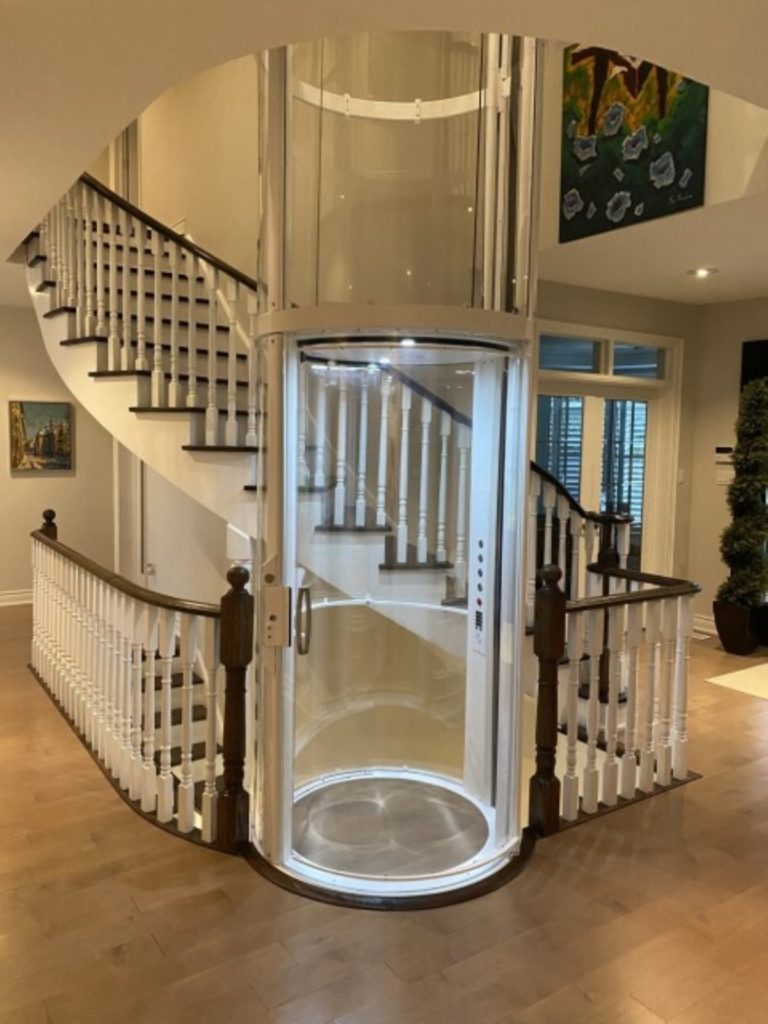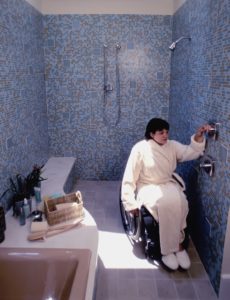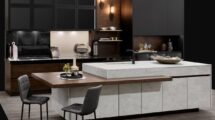Lifescape
By Janet Armstrong, Accredited Interior Designer, CAPS
When we consider home, we think of comfort, safety and familiarity and as we age these considerations are even more important. As priorities, they are also key to why many of us want to “live in place” for as long as possible.

According to a recent survey by Ipsos and HomeEquity Bank, “Ninety-five per cent of Canadian adults aged 45+ years agree (57 per cent strongly, 38 per cent somewhat) that being able to age in place would allow them to maintain their independence, comfort and dignity.” However, changing health can present challenges in spite of our desire to remain in our homes. The good news is there are a number of modifications you can make to support your physical and emotional well-being and to help yourself remain safely, comfortably at home.
When thinking about what changes may need to be made to accommodate your or your loved one’s changing health needs, these four considerations should be taken into account:
- Mobility
- Vision
- Hearing
- Cognition
In many cases, more than one of these factors has to be considered as you walk through your home and look at areas that may require changes to facilitate daily living.
While you may immediately think of grab bars, real needs far exceed this one update. Household modifications are not only for the health and safety of the person with changing health concerns, but also for the safety of their caregiver.
Mobility challenges can require the use of a cane, walker or wheelchair and many homes are not laid out or constructed to accommodate these. Removal of area rugs and carpeting is an immediate step, but consider the type of flooring that remains. Will it easily facilitate the movement of a walker or wheelchair? Is it reasonably level to ensure stability for mobility aides and to prevent tripping by someone using a cane? Are the bathroom floors slippery, especially when wet? Is there easy access to showers, sinks, counters, outlets and appliances from a seated position? Is the toilet accessible and can the person safely transition to it?
When assessing the changes to be made in your home, bear in mind the approach to a doorway for wheelchair access is 1.2 metres (about 3 feet, 11 inches) and doorways need to be a minimum of 80 centimetres (over 31 inches) wide, while the turning radius for a wheelchair is 1.5 metres (about five feet) in Ontario. If one-level living isn’t possible in your home, residential elevators are available to ensure you can access all areas.
 Changes to vision can make it increasingly difficult to navigate through your home. Depending on the level of sight loss, brighter light and contrasting finishes may provide sufficient support for the safe use of spaces. If vision loss necessitates additional support for safety and accessibility, equipment with auditory functionality is available. There are exterior cameras that can alert you when someone is approaching, while talking appliances enhance safety in the kitchen and support independence in meal preparation. In the bathroom, automatic-flushing toilets and motion-activated taps enhance safe accessibility and use.
Changes to vision can make it increasingly difficult to navigate through your home. Depending on the level of sight loss, brighter light and contrasting finishes may provide sufficient support for the safe use of spaces. If vision loss necessitates additional support for safety and accessibility, equipment with auditory functionality is available. There are exterior cameras that can alert you when someone is approaching, while talking appliances enhance safety in the kitchen and support independence in meal preparation. In the bathroom, automatic-flushing toilets and motion-activated taps enhance safe accessibility and use.
With respect to changes in hearing, look for devices that provide visual cues to alert you. From a safety and security perspective, consider flashing doorbells, smoke and CO2 detectors and security cameras that can alert you to someone approaching the door. There are also kitchen appliances on the market that provide cues to assist and support safe meal preparation, such as heating elements that turn red when on and indicator lights that indicate hot surfaces.
Declining cognition can present a number of challenges and is often accompanied by other health concerns. Smooth flooring throughout the home—with minimal transition—supports safe navigation, but flooring colour is key because changes in colour or pattern can be disorienting and cause anxiety. Motion-activated lighting and taps, as well as automatic-flush toilets, safely support daily activities. Appliances with automatic shut-off and stoves requiring two steps to turn them on are important to ensure the safety of both those with declining cognition and of caregivers.
If you are planning to invest in updates to your home in the coming year, think ahead. Consider areas that may need to be modified to address changing health needs and to ensure safe access to and use of all its spaces.
There is a wide range of products on the market to support you in maintaining your independence and in remaining safely and comfortably in your own home well into the future.
Janet Armstrong (www.simplyswankdecor.ca) is a graduate of the Interior Design Institute of Canada, CAPS (Certified Aging in Place Specialist) and past chair of the Decorators and Designers Association of Canada (DDA Canada).
Pic #1:
Easy access and reach are key to usability. Photo: CDC
Pic #2:
Home elevators increase safe accessibility to all areas of your home. Photo: Savaria, Builderonline.com
Pic #3 – Safe, accessible kitchens support and facilitate independence (Photo Credit: Abilities Expo)






